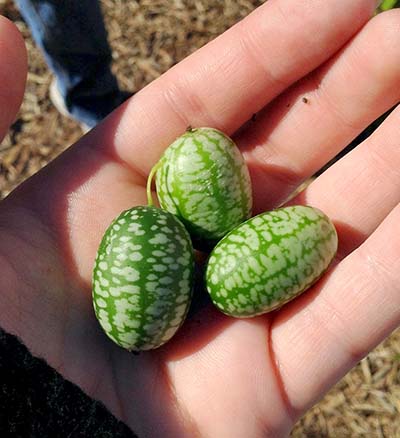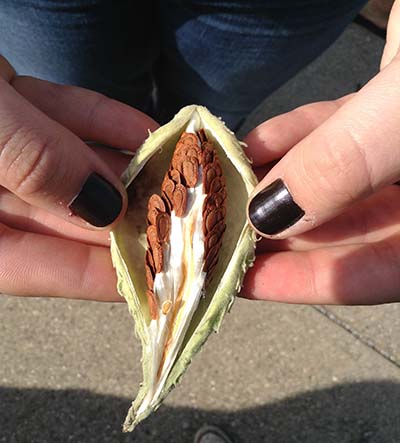Be a kid in the garden
Gardens and the plants in them are very cool. Sometimes you just have to look closely and discover your garden from a kid’s view.

This spring and summer, be a kid in your garden and open your eyes to new and exciting discoveries. Kids have an interesting “world view” that we need to understand and encourage. Kids are interested in the details and not the big picture—they want to get up close, touch, smell and interact, explore and ask questions. They are not much interested in just looking from a distance. There is no better place for this world view than in a garden. Just think of the awesome details in any single plant and all the questions that can be asked and answered.
Let me give a few examples and you can take it from there and “experience plants.” So as you enjoy your garden, use these examples as the starting point for letting your imaginations run wild and make plant connections that will last for a lifetime!
The root
Since they are underground, we often overlook the roots. Please don’t, as they can be really cool. I know—you don’t want anyone pulling up your herbs to see the roots, and you don’t have to. Instead, take a few minutes to pull some weeds—they have to come out after all—and then stop to examine the roots. What color are they? How long are they? What patterns do they form? How are they the same or different at the tips compared to near the stem? How big do you think they could grow? What do they look like if you cut them in half?
The stem
The stem is the water and food highway system in each plant. Take a close look, what color is the stem? Is it smooth or rough? Does it have hairs? What do the hairs look like? How are the leaves arranged on the stem? Do they come off opposite each other or do they alternate from one side of the stem to the other? How tall is the stem? Does it look the same near the bottom of the plant as it does near the top? If you were an insect, do you think you would like to walk on this stem? What do you think the stem would look like if you cut it in half?
The leaves
We see leaves all the time, so often that we often take them for granted. Take some time to look more closely. What color are the leaves? What does the top of the leaf look like? What does the bottom of the leaf look like? What does the edge of the leaf look like? What patterns do the veins form? Are there any holes in the leaves? How do you think those holes got there?
The flowers
We usually notice the flowers, after all they are a bit showy. But as a kid, take a much closer look. How many petals does the flower have? What does the pollen look like? If you see a bee pollinating a flower, drop everything you are doing, invite everyone you can and just watch. Is the bee nice and gentle and graceful as it goes into and out of the flower? Can you see the pollen on the bee? Can you see pollen on the stigma of the flower? Take some pictures and even a video. Pollination is an amazing process to watch.
 The fruit
The fruit
It seems we are always interested in the fruit, but many times we overlook the fruit on most plants because they are not fruit we eat. Kids, start looking closely. Where will you find the fruit? What is the smallest fruit you can find? What is the biggest fruit you can find? How are the little and big fruit the same? How are the little and big fruit different? What do we do with the fruit from this plant once we pick it? What do you think the inside of the fruit looks like?
 The seeds
The seeds
If you have been examining the fruit, you have probably already picked at least one fruit and now you can open it up to find the seeds. How many seeds do you think will be inside the fruit? Do you think the seeds will form a pattern? How big will the seeds be? Look inside small and large fruit. How are the seeds the same? How are the seeds different? What color are the seeds? What do the seeds feel like? What is the outside of the seed called?
The observations and questions could go on and on.
You could even do a scavenger hunt in your garden by “capturing” different plant parts, either the actual part or a photo. Capture roots so you will be able to get water and nutrients. Capture stems to move water and food all around. Capture leaves to make your own food. Capture flowers to attract pollinators. Capture fruit as food and capture seeds so you can have a garden again next year. You could even capture pollinators—bees and butterflies. Then share all the plant parts you have captured with your friends and encourage them to go to their garden and explore and capture as well.
This summer, be a kid in your garden. Explore the details and be amazed at the things you will discover!



 Print
Print Email
Email


